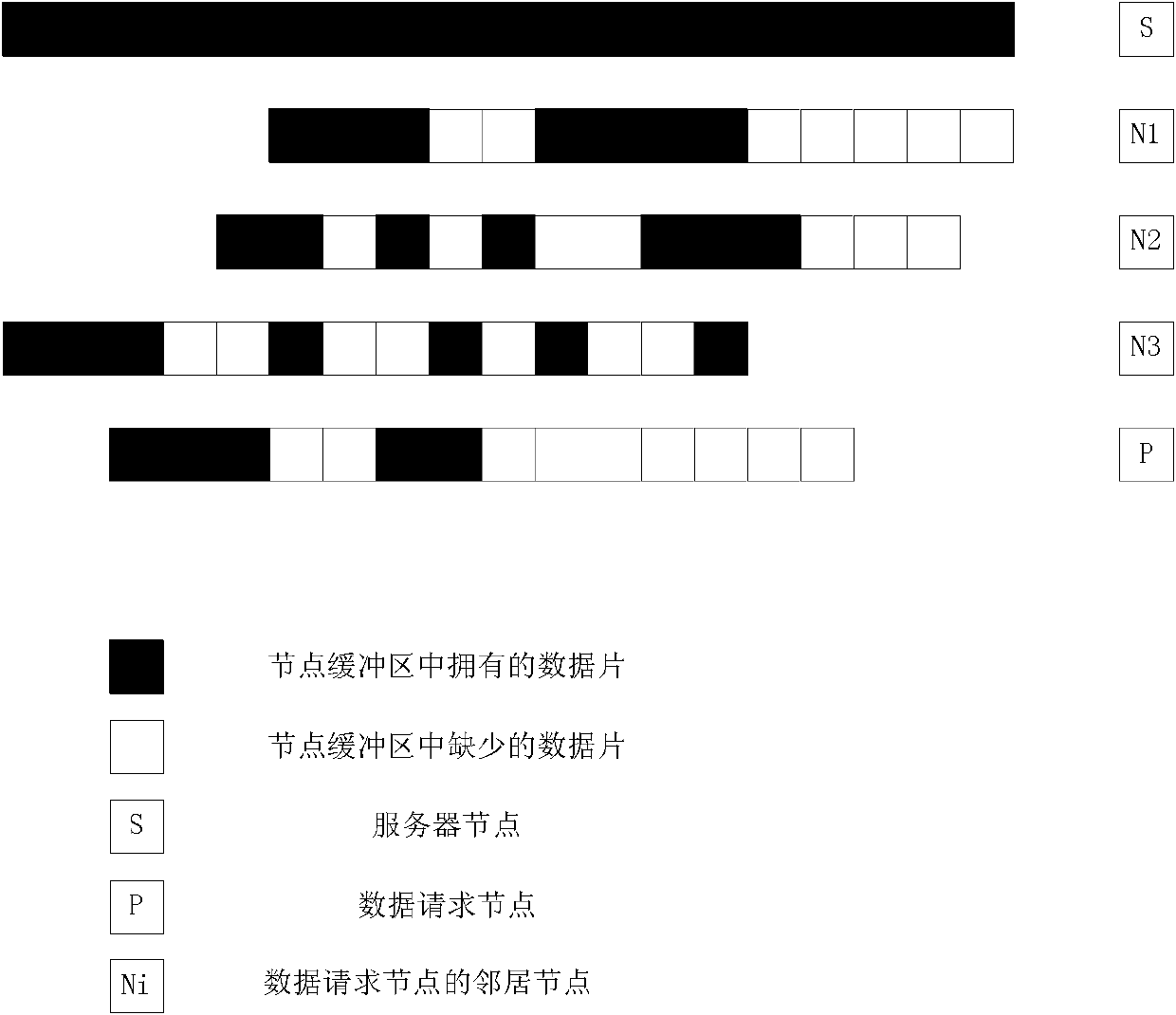Self-adaptive P2P (Peer-to-Peer) steam media data piece selection method and node
A data slice and streaming media technology, applied in the field of computer networks, can solve the problems of unreachable node data requests, improvement, and unfavorable playback quality, etc.
- Summary
- Abstract
- Description
- Claims
- Application Information
AI Technical Summary
Problems solved by technology
Method used
Image
Examples
Embodiment
[0069] The specific application scenario of the method provided by the present invention is illustrated by an example below: In this scenario, a requesting node P and N neighbor nodes are included, such as figure 2 shown.
[0070] Assume that a node P has found a neighbor node that can cooperate at this time, and hopes to download data from the neighbor node and the server to meet its own playback needs and provide services for the neighbor node. The following describes how the P node determines which neighbor nodes are requested. Data sheet steps:
[0071] (1) Before data scheduling, the user node P obtains the information of the node's last round scheduling, and obtains the buffer images of the neighbor nodes N1, N2 and N3.
[0072] (2) According to the modified sequence scheduling algorithm, node P calculates the sequence scheduling priority of each missing data piece in the request window.
[0073] (3) The node P calculates the rare priority of each missing data piece i...
PUM
 Login to View More
Login to View More Abstract
Description
Claims
Application Information
 Login to View More
Login to View More - R&D
- Intellectual Property
- Life Sciences
- Materials
- Tech Scout
- Unparalleled Data Quality
- Higher Quality Content
- 60% Fewer Hallucinations
Browse by: Latest US Patents, China's latest patents, Technical Efficacy Thesaurus, Application Domain, Technology Topic, Popular Technical Reports.
© 2025 PatSnap. All rights reserved.Legal|Privacy policy|Modern Slavery Act Transparency Statement|Sitemap|About US| Contact US: help@patsnap.com



